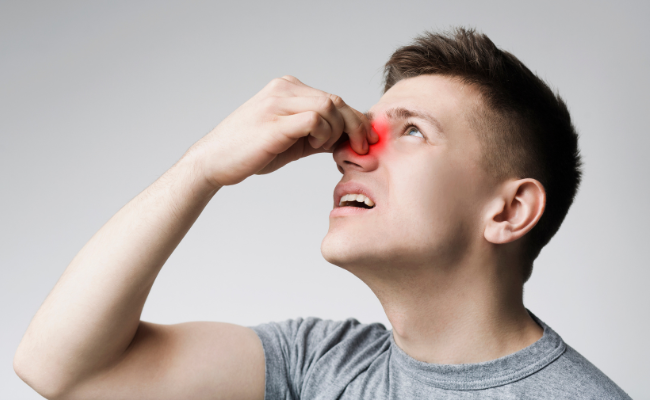How to Treat Motion Sickness?
- November 30, 2023
- No Comments
What is Motion Sickness?
Motion sickness, an ancient challenge in the realm of travel, occurs when conflicting signals reach the brain from the body's sensory systems. The delicate balance orchestrated by visual input, the vestibular system, and proprioceptors is disrupted, leading to a mismatch between what the eyes perceive and what the inner ear senses.
Encountered during various modes of transportation like car rides, boat trips, flights, or amusement park rides, this sensory confusion triggers the hallmark symptoms of motion sickness. Exposure to significant motion, whether on land, sea, or in the air, induces queasiness, clamminess, and, in severe cases, nausea or vomiting. This collective experience is universally termed motion sickness.
Why Does Motion Sickness Occur?
- The human body is remarkably adept at maintaining balance and spatial awareness under normal circumstances. However, when there's a conflict between visual and vestibular input, motion sickness can occur. The brain, in response to this sensory incongruity, interprets it as a potential toxin ingestion. Consequently, the body initiates a series of defensive responses, leading to the familiar symptoms of nausea, dizziness, sweating, and sometimes vomiting.
- Individual susceptibility to motion sickness varies. Some people are more prone to it due to factors such as age, genetics, and previous experiences with motion-related activities. Women, children aged 2 to 12, and individuals with a history of migraines or other vestibular disorders are often more susceptible.
- Children, for instance, are more prone to motion sickness because their inner ears are not fully developed, and their ability to coordinate visual and sensory input is still maturing. Additionally, older individuals may experience motion sickness due to age-related changes in the inner ear.
How Does Motion Sickness Manifest?
The symptoms of motion sickness can range from mild discomfort to severe nausea and vomiting. Common symptoms include:
- Nausea: The sensation of queasiness or an upset stomach is a hallmark symptom of motion sickness.
- Vomiting: In more severe cases, individuals may experience vomiting as the body attempts to rid itself of what it perceives as a toxic substance.
- Dizziness: A feeling of lightheadedness or unsteadiness often accompanies motion sickness.
- Sweating: Excessive sweating is a physiological response to the stress induced by the sensory conflict.
- Fatigue: Motion sickness can lead to fatigue as the body expends energy in response to the perceived threat.
- Headache: Some individuals may develop headaches as a secondary symptom of motion sickness.
These symptoms can significantly impact an individual's ability to enjoy or even endure various modes of transportation, making travel a challenging experience.
Treatment Solutions for Motion Sickness
- Antihistamines: Over-the-counter antihistamines, such as dimenhydrinate and meclizine, are commonly used to alleviate motion sickness symptoms. These medications work by blocking signals in the brain that trigger nausea and vomiting.
- Prescription Medications: In cases of severe motion sickness, individuals may consult a healthcare professional for prescription medications like scopolamine patches. These patches are applied behind the ear and provide long-lasting relief by inhibiting the signals that lead to motion sickness.
- Wristbands: Acupressure wristbands, designed to apply pressure to specific points on the wrist, have gained popularity as a non-invasive method to reduce motion sickness symptoms. These bands can be worn without concerns about side effects.
- Natural Remedy: Ginger, known for its anti-nausea properties, has been used for centuries as a natural remedy for motion sickness. Whether consumed as ginger tea or in supplement form, it has shown effectiveness in calming the digestive system and mitigating nausea.
- Deep Breathing: Practicing deep-breathing exercises can help manage motion sickness symptoms. Focusing on slow, deep breaths can have a calming effect on the body and may reduce feelings of nausea.
- Front Seat in a Car: When traveling by car, sitting in the front seat and looking straight ahead can minimize the sensory conflict that leads to motion sickness.
- Center of a Boat or Plane: Similarly, choosing a seat in the center of a boat or plane where motion is less pronounced can be beneficial.
Benefits of Managing Motion Sickness
- Enhanced Travel Experience: By effectively managing motion sickness, individuals can enjoy their travels without the discomfort and disruption of symptoms. This is particularly important for those who love exploring new destinations or need to travel frequently.
- Increased Confidence: Successfully addressing motion sickness can boost an individual's confidence in undertaking various activities that may involve motion. Whether it's a cruise, a theme park ride, or a scenic drive, the fear of motion sickness no longer hinders participation.
- Improved Quality of Life: Chronic motion sickness can significantly impact an individual's quality of life. By implementing successful treatment strategies, individuals can lead a more fulfilling and active life without the constant concern of motion-related discomfort.
- Prevention of Secondary Issues: Motion sickness can lead to secondary issues such as anxiety and avoidance behaviors related to specific activities. Effectively treating motion sickness helps prevent these secondary issues from developing or escalating.











Comments (0)
No comments yet